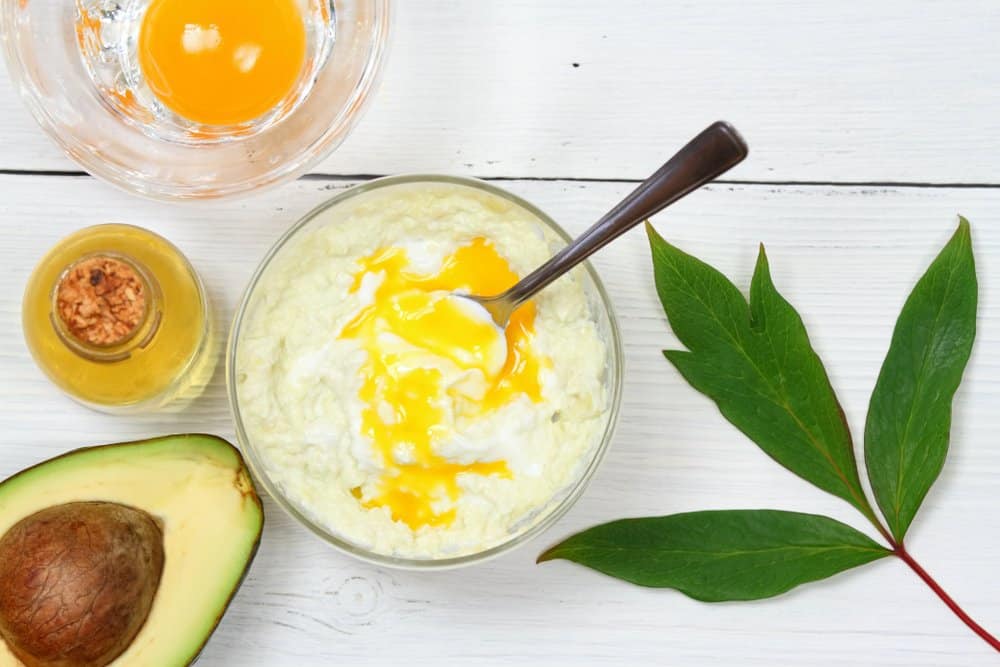While bleaching your hair may be the best way to achieve the hair color of your dreams, it doesn’t come without its drawbacks. Bleaching can be extremely rough on hair and has the potential to severely dry out or damage your locks.
If you’ve bleached your hair and noticed that it’s become dry, frizzy, stringy, or otherwise unmanageable, it may be time for some serious hydration. Rehydrating your hair after bleaching can help improve its overall appearance and assist your hair in repair itself after being bleached.
In this article, we will discuss the exact effects that bleach has on your hair and some of the best methods out there for fully rehydrating your locks.
The Effects of Bleach on Your Hair
Hair bleach contains an active ingredient mix of ammonia, hydrogen peroxide, and persulfate salts. These ingredients work together to penetrate past the cuticle of the hair, reacting with the melanin inside. The bleach then oxidizes the melanin molecules in your hair, lightening them and altering their appearance so they become colorless. This procedure is irreversible.
Any side effects of this chemical reaction are a result of the oxidation process. As your hair becomes lighter, the cuticles of the hair are damaged in the process and your hair is stripped from its natural protective oils. This results in hair that is brittle, weak, dry, or prone to falling out. The more frequently you bleach your hair and the stronger the bleach you use, the more likely you are to experience severe side effects.
How Hydration Can Help
Once your hair has been bleached, it will likely be lacking in all of the important nutrients and moisture that keeps it looking and feeling healthy. Hydrating your hair can help your hair become stronger, softer, and allow it to once again retain vital nutrients. A regular hair hydrating routine should be an essential part of your bleached hair care.
Signs of Dry or Damaged Bleached Hair
If you’ve just bleached your hair and are not sure if you need to embark on a supremely hydrating hair care routine, you can check your hair for these signs of dryness or damage.
Stringy Hair
Hair that clumps together, is stringy, or has an otherwise straw-like appearance needs hydration to strengthen it.
Frizz
Frizz, fly away hair, or otherwise unmanageable locks indicate that your hair is so dry it cannot maintain a smooth or sleek appearance anymore.
Hair That Won’t Dry
If your hair is refusing to dry, it is in serious need of hydration. This only occurs when hair is so dry or damaged it holds onto any moisture possible and refuses to let go.
Hair Breakage
After bleaching, you may notice your hair starts to snap or break off. This is a sign of hair weakness that needs to be repaired as soon as possible.
Exhibiting any one of these signs, or a combination of them, can indicate that you need to invest some time into repairing and hydrating your hair in order to bring it back to a healthy state.
How Long Will It Take To Hydrate Bleached Hair?
You can’t reverse any damage that may have happened while bleaching your hair, but you can hydrate and care for your hair as much as possible as it grows out. Depending on the level of dryness and damage your hair is at, it could take between 4 months and a year for your hair to start feeling normal again.
Haircare Tips for Hydrating Bleached Hair
These pro tips can help you hydrate your hair and are easy to incorporate into your regular hair care routine.
Use More Conditioner
One of the best things to do when your bleached hair is in need of rescue is step up your use of all kinds of conditioning products. You can use a conditioner almost every time you shower and utilize conditioning oils (such as coconut oil or olive oil) as a weekly hair treatment. You can even use a leave-in conditioner every day to encourage softness and smoothness in your locks.
Another conditioning product that might be worth the investment is a purple conditioner. These products are designed specifically for bleached hair and can help even out any brassiness or darker tones in your hair while hydrating locks and stopping frizz.
If you are unsure of which products to use, you may want to consult a stylist. They can help point you in the right direction toward the hydrating conditioners that will work the best for your hair type and level of damage.
Skip Wash Day
Washing your hair with shampoo too often can strip your hair of its natural oils. These oils are essential in protecting your hair from environmental damage and are part of your hair’s natural repair system. Consider shampooing every 2 to 3 days; if your hair becomes too oily between washes, you may want to invest in some dry shampoo.
Try Cool Water
Using hot water can elevate the cuticles of your hair strands. This, in turn, causes the cuticles to lose moisture at a faster rate, resulting in dry and weak hair. Rinsing your locks in cool or lukewarm water can help them retain some much-needed moisture and strength. Plus, it may even may your hair look shinier!
Be Gentle With Wet Hair
When your hair is wet, it is at its most vulnerable state. You should be careful not to brush your hair while it is wet or be too rough with it. You may also want to avoid drying it with a cotton towel and instead invest in a microfiber towel; microfiber towels will dry your hair without creating tangles or frizz, a definite benefit for already damaged bleached hair.
Avoid Heat Styling
For hair that is already damaged, continuing to use heat styling tools can only make matters worse. Heat styling tools carry the risk of drying out and damaging hair with regular use; on dry bleached hair they are sure to create more frizz and breakage. In order to allow your hair to repair and rehydrate itself, leave it to air dry. An air dry cream can help boost your hair’s texture and shine during this process.
Consider a Protein Treatment
Protein treatments can be done at home or received at a salon. They are designed to coat the hair with proteins and essential amino acids, infiltrating cuticles, filling in gaps and repairing damage. This can leave you with more hydrated, stronger, and shinier hair as an end result.
It is important to note that you can overdo it with protein treatments and end up making your hair drier or frizzier. It is recommended to only use a protein treatment one once a week for the first month after bleaching your hair, followed by one or twice a month use after that.
Invest in Olaplex
Olaplex is the brand name of line of hair care products designed to repair extremely dry and damaged hair. The system is formulated to repair and strengthen bonds in the hair, improving hair’s appearance and overall hydration. You can take a diagnostic quiz on the brand’s website to select which product would be the most beneficial for hydrating your bleached hair.
Lifestyle Tips for Hydrating Bleached Hair
Changing certain aspects of your lifestyle can help you repair your hair and maintain healthy tresses for years to come.
Keep Hydrated
Keeping yourself hydrated is a key factor in keeping your hair healthy and full of moisture; dehydration limits hair growth and can cause hair to look dull or lifeless. You should be drinking approximately 11 and a half cups of water a day if you are a woman, and 15 and a half cups a day if you are a man.
Enhance Your Diet
Eating a well-balanced diet of healthy fatty acids, vitamins, and minerals can boost your overall health and improve the appearance of both your skin and your hair. It may take a little longer to see results when changing your diet, but eating healthily is one of the best things you can do for your body as it will also help hydrate and vitalize your hair.

Protect Your Hair
Whether you are sleeping or spending the day outdoors, you should take care to protect your hair from any environmental damage. Wrap your locks up in protective styles such as braids or a bun when going outside, especially when it is windy. Use a hat to protect your hair (and skin!) from too much sun exposure, and sleep with your hair pulled back in a protective style.
Additionally, you may want to invest in a silk or satin pillowcase. The texture of this fabric will not cause snags or create frizz in your hair overnight and can help your hair maintain its integrity, something that’s very important for dry or damaged hair.
Consider a Trim
Sometimes, the best way to care for your bleached hair is to give it a trim. Chopping off the most damaged parts can help you focus your attention on hydrating the rest of your hair. A trim can also help your hair grow out quicker, meaning new, healthy hair will grow in faster.
Avoid Chlorine
It may be difficult if you are trying to hydrate bleached hair over summer, but avoiding pools and chlorine can go a long way to keeping your hair hydrated. Chlorine naturally weakens bleached hair and may even react with your locks to give your hair a green tint. Always be cautious of chlorine and consider pulling your hair up into a protective style when in the pool.
Ingredients to Avoid
Certain hair care products feature ingredients that would be more harmful to bleached hair than helpful. These ingredients include sulfates, alcohols, artificial fragrances and colorings, parabens, and mineral oils. All of these ingredients can be incredibly drying to hair over time and may prevent you from effectively rehydrating your hair.
Ingredients to Seek Out
On the other hand, you may want to look out for ingredients such as coconut, olive, and jojoba oils, shea butter, vitamin E, and plant essential oils. Their additions into hair care products can be incredibly hydrating and beneficial to dry or damaged bleached hair.

DIY Hair Hydration
There are a number of DIY recipes you can mix up using ingredients around the home to start hydrating your hair asap. These methods can be more economical than constantly purchasing store-bought hair masks and conditioners, and may be a great idea for anyone with a sensitive scalp who needs to use the most natural hair products possible.
Homemade hair masks and hair oils are the most efficient at hydrating hair, but you can also craft your own leave-in conditioners and hydrating detanglers. DIY recipes are perfect for when you want to completely customize products to your exact hair type and cosmetic needs.
Revitalizing Your Bleached Hair
Repairing hair that has been dried out or damaged by bleach is no easy task. It can take a lot of time and a plethora of hydrating products just to return your hair to its natural, healthy state. However, if you incorporate a variety of hair care and lifestyle changes into your routine, you will be able to revitalize and hydrate your bleached hair in no time at all.
